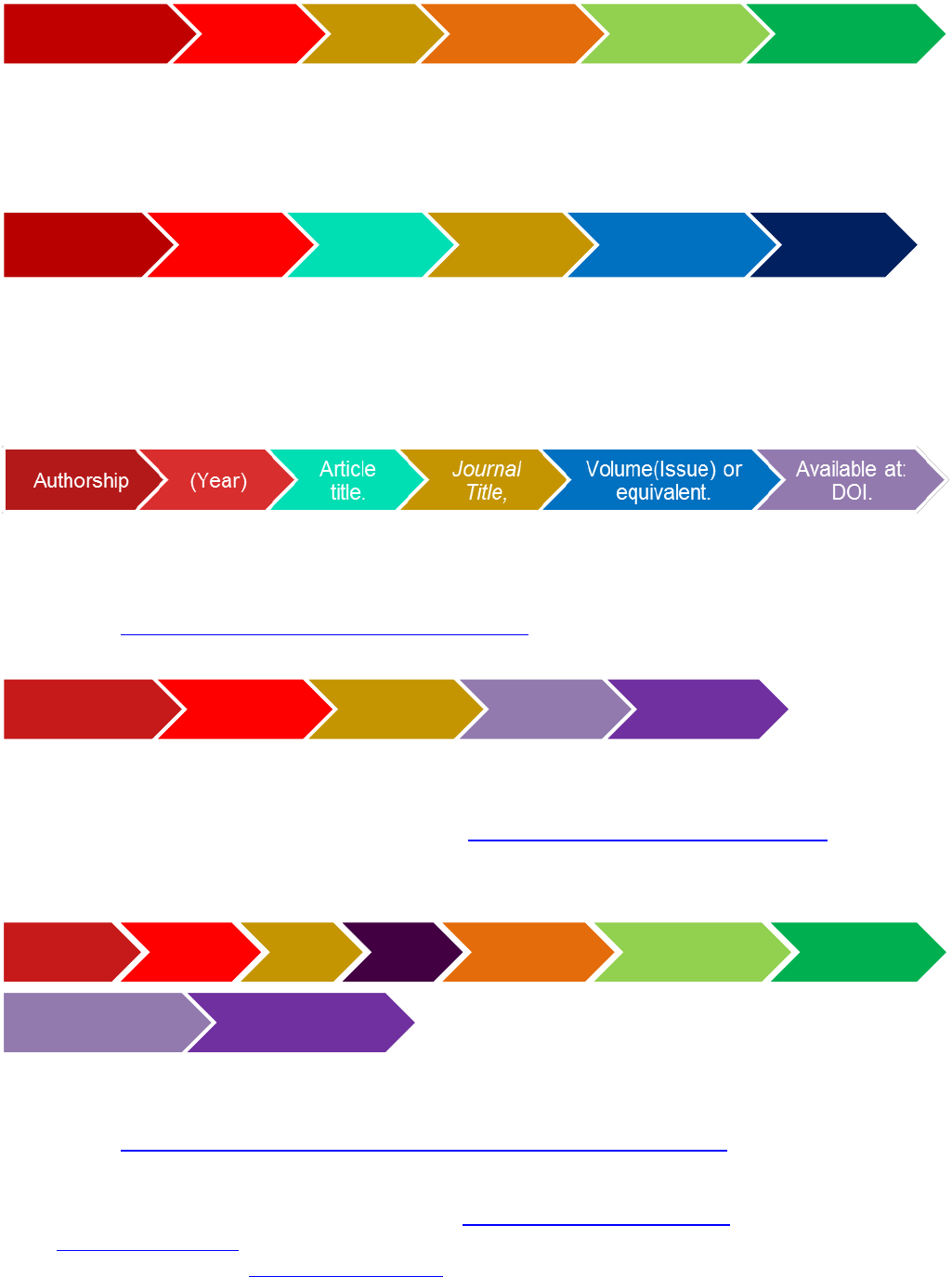
Harvard Referencing: Short Guide
Introduction
Referencing is a vital component of academic writing. It demonstrates your ability to select and refer to the
most appropriate external sources which support your work. You need to give proper credit to the authors of
any work from which you use information in order to avoid plagiarism.
In the Harvard style there are two aspects to referencing:
Citing sources within your text
Providing a list of all the sources you have cited at the end of your text, known as the reference list
(different from a bibliography, which is a list of set texts you were given but which you may not have
cited)
Citing
Every time you refer to information from an external source in your writing you should provide a citation.
Citations always include:
The surname of the author(s) or the name of the organisation responsible for the source
The year it was published; if no year is available, use “n.d.” for “no date”
They may also include a page number or a sequence of pages from within the source. Harvard citations can
be direct or indirect.
A direct citation is where the name of the author(s) is(are) used within a sentence.
Example:
Mantzios and Wilson (2014) and Hussein et al. (2017) both used concrete construal diaries
as a way to enhance mindful eating.
Note: Where a source has two authors, the citation should include both author surnames, separated
by the word “and”.
Note: This example also demonstrates how to cite three or more authors – just use the surname of
the first author followed by “et al.”.
An indirect citation is where the name of the author(s) is(are) not used within a sentence. It is always placed
at the end of a sentence before the final full stop. Indirect citations may contain several sources. These should
be separated by semi-colons and listed in alphabetical order.
Example:
Recent research has used literary theory and the tools of literary criticism to interrogate and
do justice to the complexity of the narratives of offenders (Presser, 2009; Sandbergs, 2010;
Yardley et al., 2015).
Quoting is where you provide text from an external source word for word. The page number(s) is
compulsory with a quote but optional with other types of citation. It is given after the year, separated by a
colon. Apart from exceptional circumstances, no more than 10% of all your citations should be quotes.
Example:
Card and Molloy (2016: 748) advise that the normal rule is that “a person cannot be
convicted as an accomplice to an offence unless it is proved that that offence has been
committed by someone else”.
Summarising is where you take source information and put it in a shorter form in your own words. For
more information on how to summarise, go to http://tinyurl.com/bcu-wri-sum.

© 2019 Birmingham City University, Library and Learning Resources
The Reference List
The reference list should be put in alphabetical order of the last names of the authors or authoring
organisations. The exact style of each reference depends on its type. Here are some common examples:
Referencing a book
Example:
Card, R. and Molloy, J. (2016) Card, Cross & Jones Criminal Law. 22
nd
edn. Oxford: Oxford
University Press.
Referencing a paper journal article
Example:
Yardley, E., Wilson, D., Kemp, D. and Brookes, M. (2015) Narrative beyond prison gates:
contradiction, complexity and reconciliation. International Journal of Offender Therapy and
Comparative Criminology, 59(2), pp. 159-179.
Referencing an an online journal article (no print equivalent) with a DOI
Example:
Hussein, M., Egan, H. and Mantzios, M. (2017) Mindful construal diaries: a less anxious, more
mindful, and more self-compassionate method of eating. SAGE Open, 7(2). Available at:
http://dx.doi.org/10.1177/2158244017704685.
Referencing a website
Example:
Conflict Memory Displacement (2016) Conflict Memory Displacement: Responding to the refugee
crisis in the UK and Italy. Available at: http://conflictmemorydisplacement.com/ [Accessed 28
July 2016].
Referencing a report in pdf format
Example:
Bank of England (2019) Inflation Report, August 2019. [pdf] London: Bank of England. Available at:
https://www.bankofengland.co.uk/inflation-report/2019/august-2019 [Accessed 22 August
2019].
More examples and information are available from https://tinyurl.com/bcuharvard. For more help, please
email success@bcu.ac.uk or visit the Centre for Academic Success, C142, Curzon Building, tel. 0121 331
7685, or book a tutorial via http://bcu.iinsight.org/.
Authorship (Year) Title.
Edition.
(if not first)
Place of
publication:
Publisher.
Authorship (Year)
Article
title.
Journal
Title,
Volume(Issue), pp. pages.
Authorship (Year) Title.
Available at:
URL
[Accessed
date].
Authorship (Year) Title. [pdf]
Edition. (if
not first)
Place of
publication:
Publisher.
Available at: URL [Accessed date].
